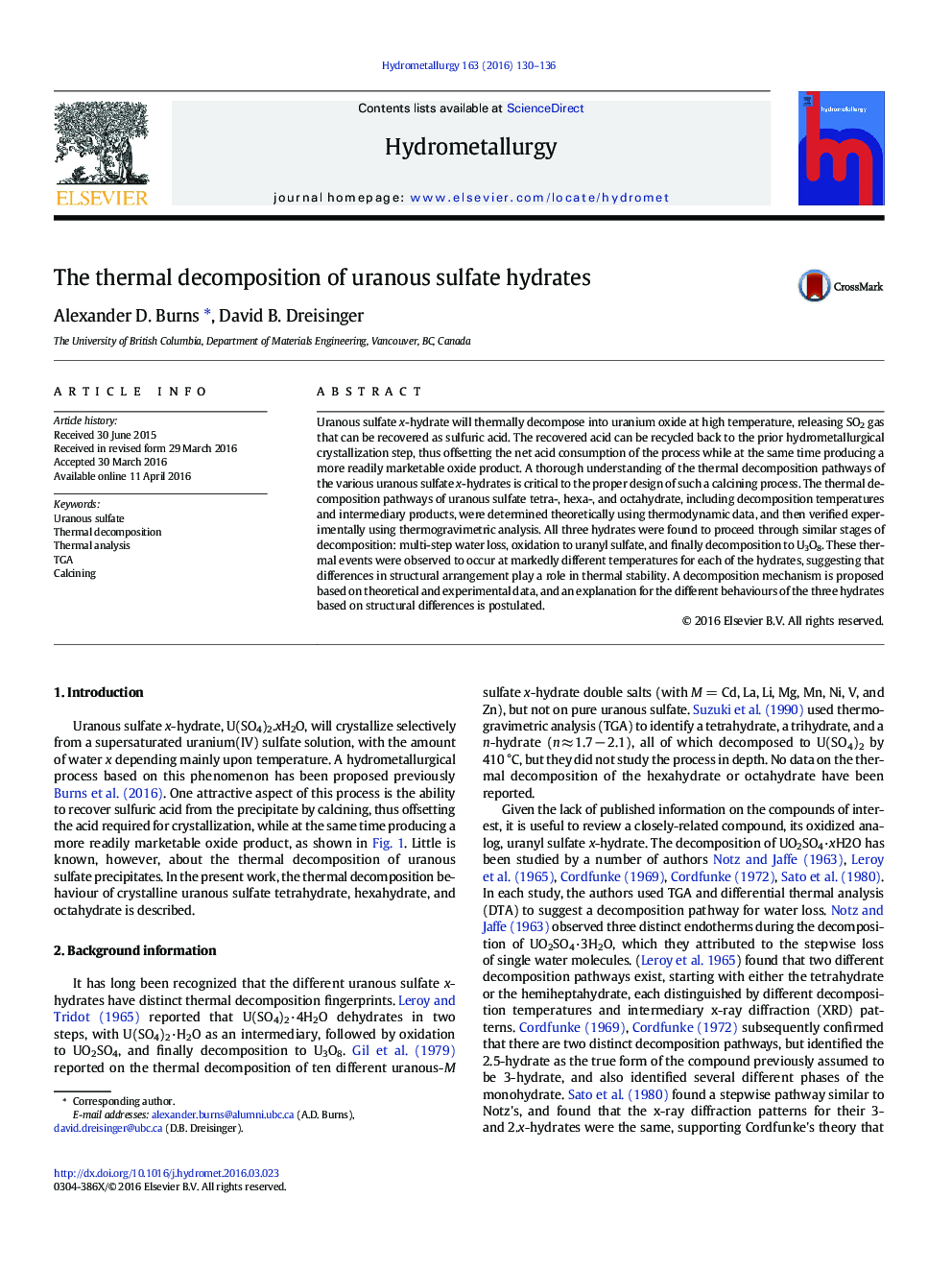| Article ID | Journal | Published Year | Pages | File Type |
|---|---|---|---|---|
| 211866 | Hydrometallurgy | 2016 | 7 Pages |
•Uranous sulfate x-hydrate decomposes in three stages: water loss; oxidation to uranyl sulfate; conversion to U3O8.•Sulfuric acid can be thermally stripped and recovered from uranous sulfate x-hydrate through calcining.•Thermal decomposition pathways for each of the three uranous sulfate hydrates are proposed.•The thermal decomposition behaviour is markedly different for each of the different hydrates, which could impact the design of a calcining or acid recovery system.
Uranous sulfate x-hydrate will thermally decompose into uranium oxide at high temperature, releasing SO2 gas that can be recovered as sulfuric acid. The recovered acid can be recycled back to the prior hydrometallurgical crystallization step, thus offsetting the net acid consumption of the process while at the same time producing a more readily marketable oxide product. A thorough understanding of the thermal decomposition pathways of the various uranous sulfate x-hydrates is critical to the proper design of such a calcining process. The thermal decomposition pathways of uranous sulfate tetra-, hexa-, and octahydrate, including decomposition temperatures and intermediary products, were determined theoretically using thermodynamic data, and then verified experimentally using thermogravimetric analysis. All three hydrates were found to proceed through similar stages of decomposition: multi-step water loss, oxidation to uranyl sulfate, and finally decomposition to U3O8. These thermal events were observed to occur at markedly different temperatures for each of the hydrates, suggesting that differences in structural arrangement play a role in thermal stability. A decomposition mechanism is proposed based on theoretical and experimental data, and an explanation for the different behaviours of the three hydrates based on structural differences is postulated.
